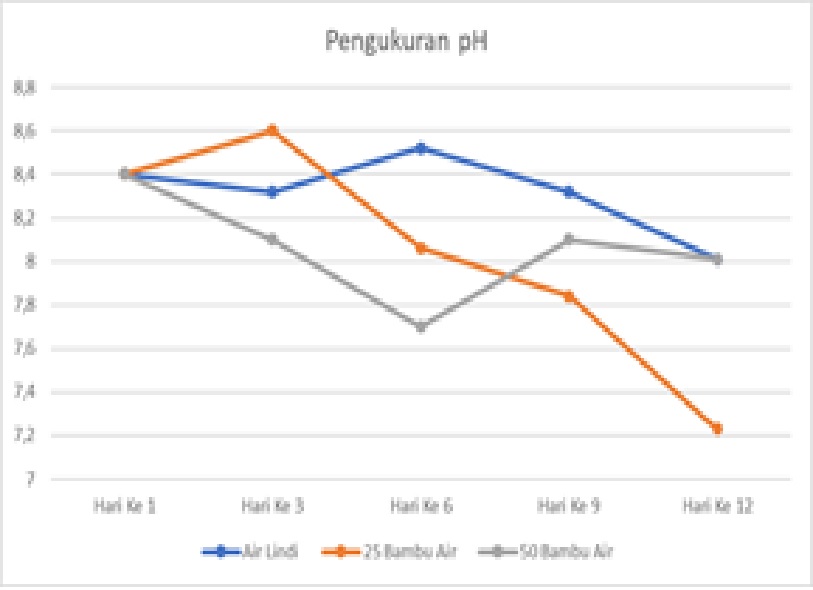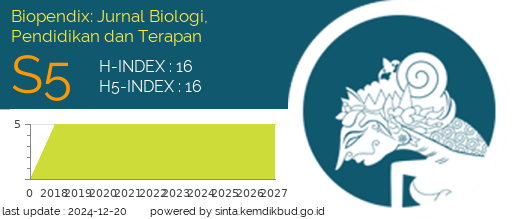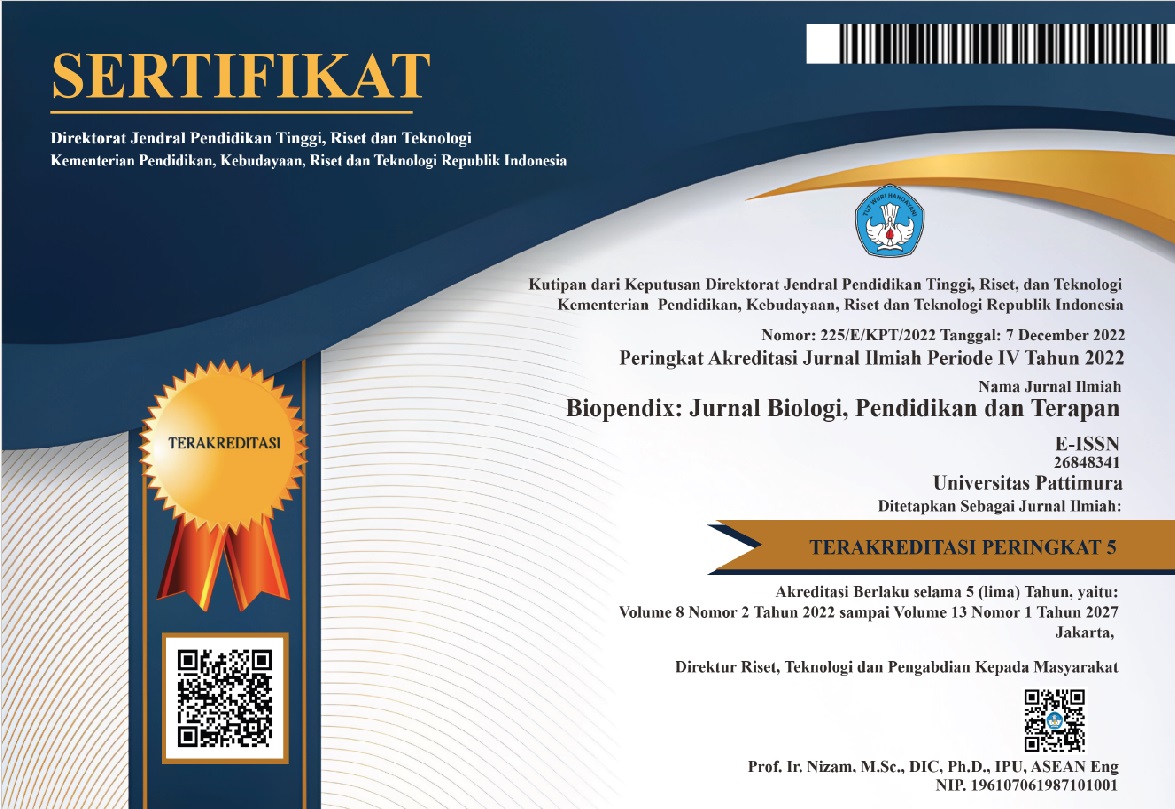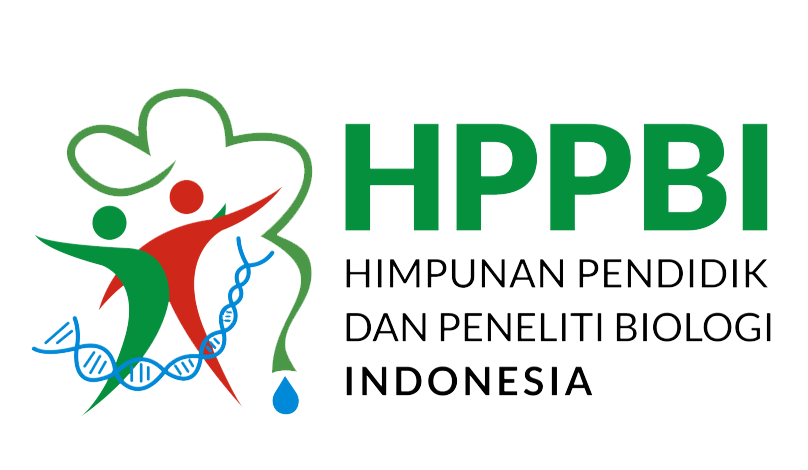EFEKTIVITAS TANAMAN BAMBU AIR (Equisetum hymale) TERHADAP LOGAM BERAT TIMBAL (Pb) PADA AIR LINDI (Leachate)
Abstract
Background: Leachate is water formed from piles of rubbish containing inorganic and organic compounds. One example of an organic compound that can cause environmental pollution is Pb (lead). Efforts to reduce levels of the heavy metal Pb are by carrying out phytoremediation using aquatic bamboo plants (Equisetum hymale).
Methods: This research was conducted during September 2024 at the Green House, Medan State University, with leachate water samples taken from the Dendang Sea Final Waste Disposal Site (TPAS), Medan Tembung District, Deli Serdang Regency, North Sumatra Province. Methods used in the research This method uses descriptive or observational methods which are presented in the form of tables and graphs.
Results: Research shows that water bamboo plants are able to absorb Pb levels in leachate water as seen from the parameters of changes in pH, temperature, color and physical condition of water bamboo plants.
Conclusion: Water bamboo can be used as phytoremediation to reduce Pb levels in leachate waste.
Downloads
References
Afdal, Sari RN. 2016. Karakteristik lindi dari Tempat Pembuangan Sampah (TPA) Air Dingin, Kota Padang, Sumatera Barat. Prosiding Fisika dan Aplikasinya (SNFA) Pascasarjana Ilmu Fisika, Universitas Sebelas Maret Surakarta. 8-13.
Anam, M. M., Kurniati, E., & Suharto, B. (2013). Penurunan kandungan logam pb dan cr leachate melalui fitoremediasi bambu air ( equisetum hyemale ) dan zeolit reduction of pb and cr metals contents of leachate by means of phytoremediation of bambu air ( equisetum hyemale ) and zeolite. Jurnal Keteknikan Pertanian Tropis Dan Biosistem, 1(2), 43–59. https://jkptb.ub.ac.id/index.php/jkptb/arti cle/view/118/121
Fitrianah, L., Mohammad Y., & Sobri, E. (2017). DAMPAK PENCEMARAN AKTIVITAS KENDARAAN BERMOTOR TERHADAP KANDUNGAN TIMBAL (PB) DALAM TANAH DAN TANAMAN PADI. Jurnal Pengelolaan Sumberdaya Alam dan Lingkungan, 7(1): 11-18.
Ihtiar, A. (2024). EFEKTIVITAS BAMBU AIR (Equisetum hyemale) SEBAGAI AGEN FITOREMEDIASI LINDI TPA ATIBARANG TERHADAP BOD DAN COD SERTA IMPLEMENTASI HASIL PENELITIAN PADA PEMBELAJARAN BIOLOGI (Doctoral dissertation, UNIVERSITAS PGRI EMARANG)
Irhamni., Setiaty P., Edison P., dan W. Hasan. 2017. Kajian Akumulator Beberapa Tumbuhan Air Dalam Menyerap Logam Berat Secara Fitoremediasi. Jurnal Serambi Engineering. 1(2):75–84.
Keslingmas, 35, 278–396. Sari, E., Jumiati, & Sari, M. (2016). Kemampuan Adaptasi Tumbuhan Air Lokal Terhadap Air Lindi (LEACHATE). Jurnal Pendidikan Biologi, 3(1), 77–89.
Kurniawati, S., Ulfah, M., Nurwahyunani, A., & Hayat, M. S. (2023). Water bamboo plant (Equisetum hyemale) as a phytoremediation agent for water pollution waste. Biological Environment and Pollution, 3(2), 76-82. Margowati, D., Abdullah, S., & Kunci, K. (2016). Dalam Menurunkan Kadar Bod Dan Cod Air Limbah Rumah Tangga Di Desa Kracak Kecamatan Ajibarang Kabupaten Banyumas Tahun 2016.
Suharto, B., Susanawati, L. D., & Wilistien, B. I. (2011). Penurunan kandungan logam Pb dan Cr leachate melalui fitoremediasi bambu air (Equisetum hyemale) dan zeolit. Agrointek: Jurnal Teknologi Industri Pertanian, 5(2), 148-158.
Sukono, G. A. B., Hikmawan, F. R., Evitasari, E., & Satriawan, D. (2020). Mekanisme Fitoremediasi: Review. Jurnal Pengendalian Pencemaran Lingkungan (JPPL), 2(2),40–47. https://doi.org/10.35970/jppl.v2i2.360
Sulaiman, A., Nilandita, W., & Suprayogi, D. (2022). Fitoremediasi Memanfaatkan Tanaman Coontail untuk Menurunkan Kadar Timbal ( Pb ) menggunakan Sistem Batch Phytoremediation Utilizing Coontail Plants to Reduce Lead ( Pb ) Levels using a Batch System. 6(1), 9–18.
Widyastuti, D., Suprayitno, D., & Rahardjo, P. P. (2023). Potensi bambu air sebagai tanaman hiperakumulator logam berat Zn pada Leachate menggunakan metode fitoremediasi. Jurnal Green House, 2(1), 32-37.

Copyright (c) 2024 Christina Aritonang

This work is licensed under a Creative Commons Attribution-ShareAlike 4.0 International License.
Authors who publish with BIOPENDIX: Jurnal Biologi, Pendidikan dan Terapan agree to the following terms:
- Authors retain copyright and grant the journal right of first publication with the work simultaneously licensed under Creative Commons Atribution-ShareAlike 4.0 International License (CC BY-SA 4.0) that allows others to share the work with an acknowledgment of the work's authorship and initial publication in this journal.
- Authors are able to enter into separate, additional contractual arrangements for the non-exclusive distribution of the journal's published version of the work (e.g., post it to an institutional repository or publish it in a book), with an acknowledgment of its initial publication in this journal.
- Authors are permitted and encouraged to post their work online (e.g., in institutional repositories or on their website) prior to and during the submission process, as it can lead to productive exchanges, as well as earlier and greater citation of published work.




 2
2






